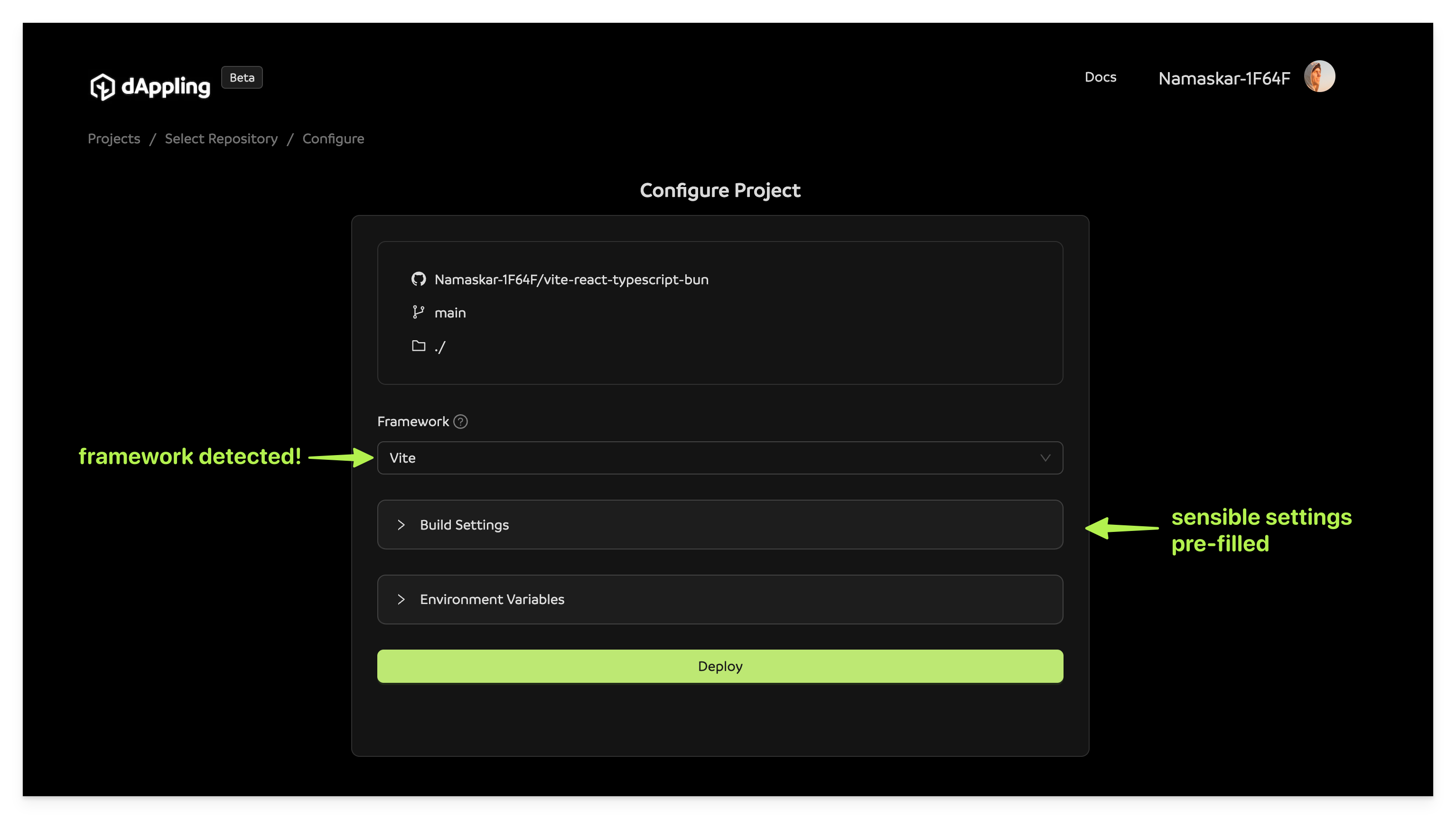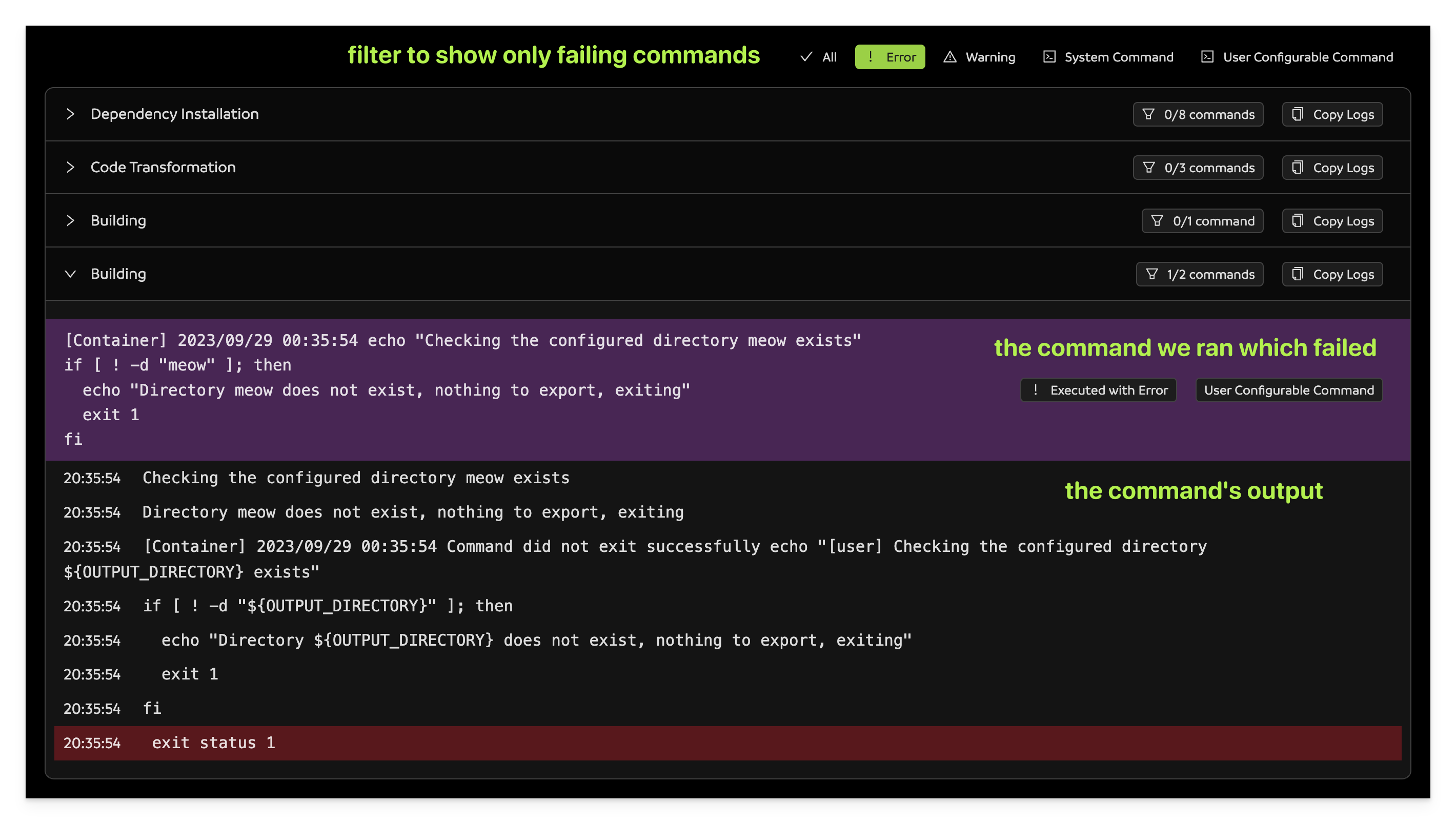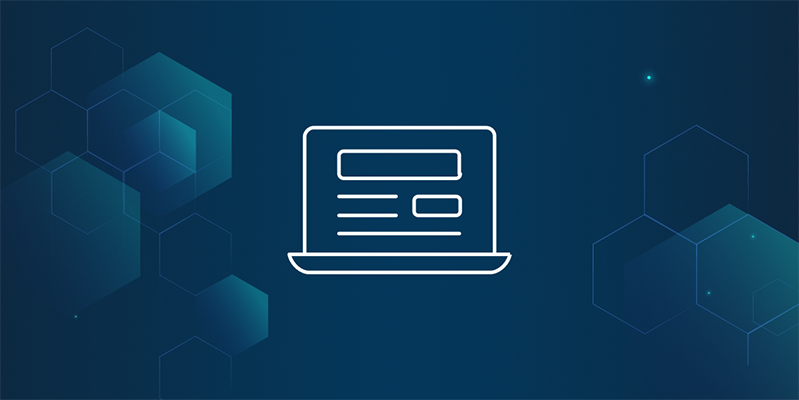Welcome! I would love to share what I'm building at dAppling (opens new window), a platform that aims to simplify the build and deployment process for sites hosted on IPFS. I'll share a bit about us, a bit about the platform, and a bit about what you will get. By the end, it should be clear if dAppling (opens new window) is a tool you'll want to add to your developer toolbox.
# A Bit about Us
I'm Kyle. My co-founder Russell and I have been professional developers (whatever that means) for the last 7 years. We've worked at startups, big tech, and things in between. The last 2 of those years has been in the web3 space; started with the creation of a DeFi protocol. We're excited to now be building tools for developers working on the next generation of the web.
# A Bit about dAppling
The first of those tools is dAppling. The word is a portmanteau of "dApp", a term short for decentralized application, and "sapling," because nature is wonderful 🌱. However, we support all kinds of web projects, not just dApps (opens new window): landing pages (opens new window), blogs (opens new window), or even a simple page of content arguing against the usage of acronyms (opens new window).
Basically, we fetch your code, build it into html/css/js files, and host those files on IPFS. What makes us special are the features we provide to make your experience easier. Even if you have an existing site, you can use dAppling (opens new window) to create a resilient "alternative frontend" that is hosted on IPFS.
# A Bit about What You Get
When you add a project to dAppling (opens new window), you will tell us where the code is and what commands to use. After it's built you will get:
- automatic updates when your code on GitHub changes
- hosting on the InterPlanetary File System (IPFS)
- a working dappling.network subdomain
- a working dappling.eth ENS subdomain
- an automatically updating IPNS key
# Our Focuses
We have two major focuses at dAppling (opens new window): simplicity and access.
We want to make it as easy as possible to get your code hosted. After that, we want it to be accessible and fast. What we want to avoid is a first-time experience where you only see an error screen or have your users waiting forever to load your site.
# Simplicity
We simplify the setup process by automatically detecting your app's configuration. If something does go wrong, we have easy to use debugging tools.
# Simple Setup
Since we have access to your code, we look at a few things like what package manager you use, what sort of framework the project is built with, and certain configuration files. We use this information to prefill the configuration form, so you don't have to.
We have support for environment variables to use during the build process that can be used to configure things like your database URL. Additionally, we support monorepos.

# Simple Debugging
Try as we might, projects fail to build. Quite a bit! From a linting error to a missing dependency, seeing the error screen seems inevitable. We want to make it as easy as possible to understand what went wrong and how to fix it. We parse the logs and show you the error in, what I think, is a pretty readable format.

If reading logs isn't your thing, we have a button that sends your logs to be parsed by AI and returns a summary of the error. And while it's not perfect, the output has been helpful more often than not.
# Accessibility
Websites need to be accessed, even if the reader is only you! We think the more points of access the better, and each should be available and fast.
# Speed of Access
The foundation of our storage starts with Filebase (opens new window) whose geo-redundant storage locations keep your files available. On top of that, the CDN quickly fetches and caches those files.
# Points of Access
There are a couple of ways to access your site. When the code is built and uploaded to IPFS, you will receive what is called a Content Identifier (CID) (opens new window). It's basically the hash of all your files.
You will receive a new CID every time your site is re-built because the resulting files have changed. Luckily, we use the InterPlanetary Name System (IPNS) (opens new window) to create a key that will always point to the most recent CID.
So the most straightforward way to fetch your content would be directly from an IPFS node (opens new window). Since not everyone is running an IPFS node (yet), you can instead use an IPFS gateway (opens new window) in which a third party fetches the content from their node and serves it over HTTPS.
Since we store the on our dappling.eth ENS name, you can also fetch the content through a service like eth.limo (opens new window). This service first reads the IPNS key that we set, resolves it to a CID, and then serves the content like a gateway.
Even simpler would be using the existing DNS system either using our custom *.dappling.network subdomain that we created for you. We also allow adding your custom domain like ipfs.crypto-protocol.app.
# Future
We plan to be constantly upgrading the platform as new decentralization techniques appear. As a user, you will notice more points of access, quicker speeds, and features to make usage easier. We hope to increase decentralization
- SSR: Serverless applications are popular on platforms like Next.js and we will be using decentralized compute to increase the types of applications we support.
- Collaboration: The more participants in a project the better the decentralizaton becomes. We are working on tools to allow multiple people configure the project.
# Get Involved
As we continue to improve dAppling (opens new window), we're always looking for user feedback to guide us. Our focus remains on providing a platform that is not just decentralized but also highly performant and user-friendly.
Deploy a site (opens new window), and if you run into any problems, want to connect, or just say hi, my DMs are open on 𝕏 (opens new window). I would love to hear about what you're building and help you get all of your projects deployed as we transition to the infrastructure of the future.
🙏
